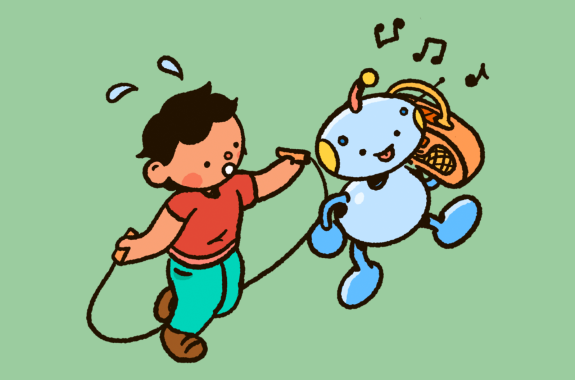Grade Level
6 - 8
minutes
15 min - 1 hr
subject
Life Science
stem practices
Planning and Carrying Out Investigations
Activity Type:
STEAM, family activities, After School Activity, brain, neuroscience
Este recurso está disponible en español. This resource is available in Spanish.
Jump to: Video | Puzzle | Trivia
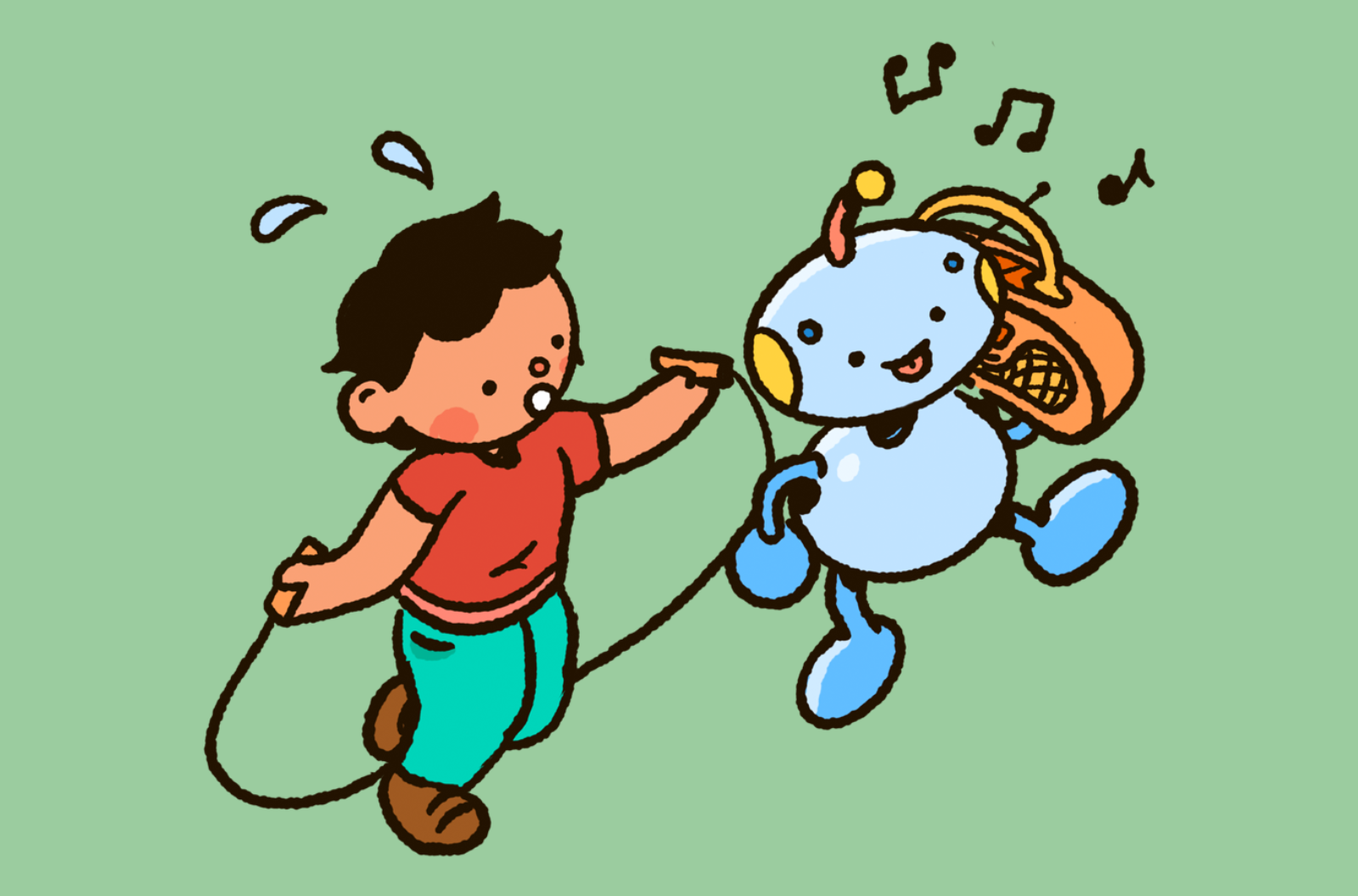
Have you ever jumped rope? Challenge yourself to try it. Find a jump rope or a piece of clothesline seven to eight feet long. (You can even make your own jump rope out of plastic bags or old t-shirts.)
First, check your space to make sure you can jump rope comfortably and safely. Grab a jump rope handle in each hand. Start with the rope behind you, against the back of your heels. Next, swing the rope overhead and down to sweep it under your feet. Bend your knees a bit and hop over the jump rope as it goes under your feet. Aim to jump about an inch off the ground. It helps to stay on the balls of your feet like you’re trying to stand on your toes.
If you don’t have a jump rope, try a hand-clapping game, like Miss Mary Mack, or try another jumping game, like switch or scissor jumps. Jump and land with your right foot in front of your body and the left one behind your body. Then, hop and switch feet on the next jump, reversing their positions.
How many jumps can you get in a row? How many claps can you get without making a mistake?
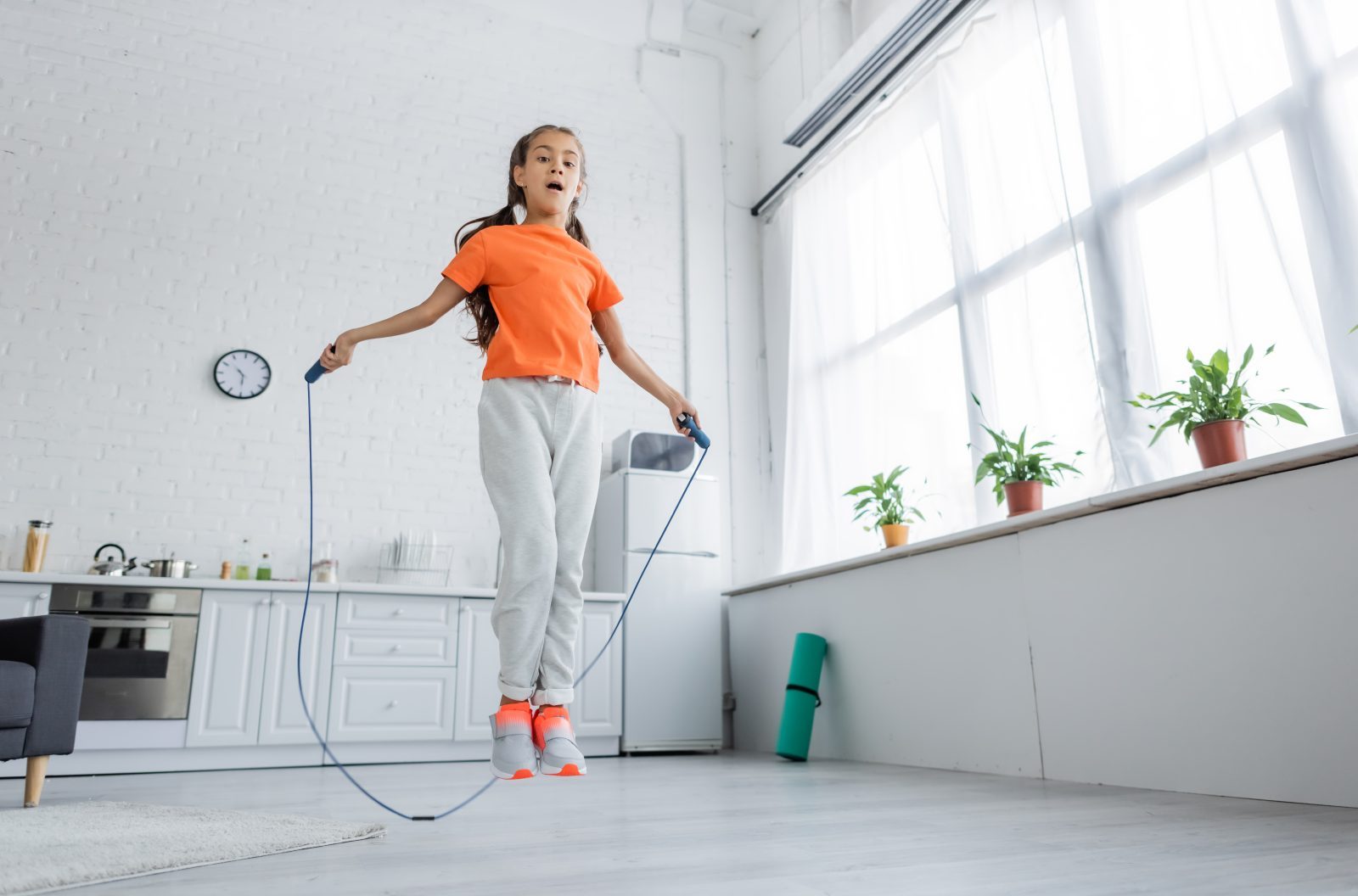
Your Brain Controls Your Movement
If you’ve never used a jump rope before, it can be difficult to get started! How easy was it for you to jump rope at first? Were you frustrated at all when you couldn’t get it? It is OK if you were. Sometimes, trying new things can be hard!
Did you get better at it the longer you jumped? With practice, our brains can learn the correct sequence to move our bodies.
Muscle memory is a form of memory where your brain remembers movements—sometimes called motor tasks—and is able to perform them in a sequence without you having to think about them.
When you first learn a new motor task, you will need to dedicate your full attention to it to ensure you get the details right. This muscle memory starts slowly and can be easily disrupted if your full attention isn’t given to the task. That’s why your coach or music teacher might ask you to “focus” when practicing. Over time, with lots of practice, the motor task becomes easier and can be performed without thinking about it.
Your Brain Has Many Parts
You may not realize it, but your amazing brain is constantly working to help you move.
Movement involves the cerebral cortex or the outer “shell” of your brain, often referred to as the “gray matter.” The frontal lobe is right behind your forehead and includes a region called the motor cortex. It plays an important role in carrying out voluntary movements, which are movements you can control, like kicking your leg or turning your head. The motor cortex collects information from other parts of your brain to understand your body’s position, determines how to create the movement you want, and calls on other parts of the brain to make the movement happen. Think of it as the driver steering a car.
The cerebellum, also known as the “mini-brain,” is another area involved in muscle movement. It helps your muscles and body coordinate and refines movements, ensuring they happen smoothly and in the correct sequence. The cerebellum also helps us stay balanced. A collection of brain cells nestled deep in the brain called the basal ganglia is involved, too. When it comes to voluntary movement, it serves as a sort of gatekeeper. It decides which movements to allow, initiating and regulating the movements you make. Together, the cerebellum and basal ganglia are responsible for the regulation of voluntary movement. They work together to make sure that you move the right parts of your body in a way that is precise and well-timed.
Thanks to your motor cortex, basal ganglia, and cerebellum, your brain works behind-the-scenes to make sure you can walk, run, and even stand. Often, your brain coordinates your movements without you realizing it.
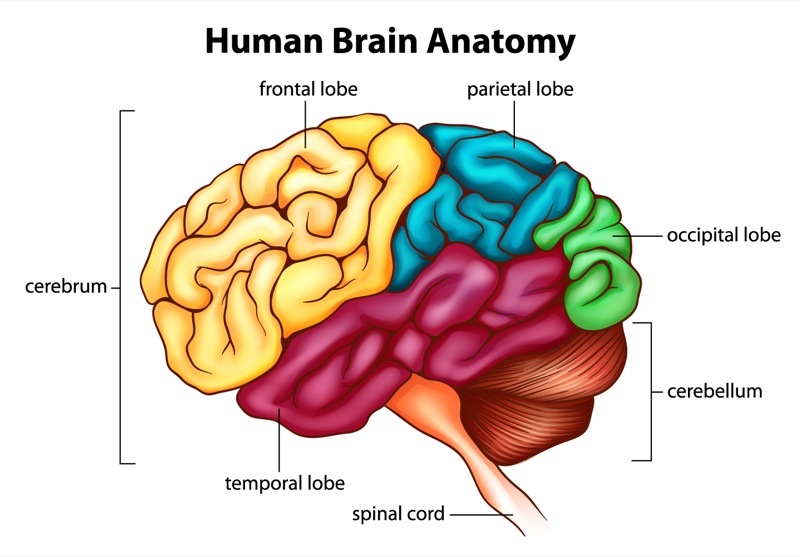
Another cool thing about the brain is that aerobic exercise, such as walking, bicycle riding, jogging, swimming, and, yes, jumping rope, has positive effects on the brain and can improve your mood!
Putting Motor Memory To Use
Pause and think about something you have had to practice over and over other than jumping rope. Was it shooting hoops or soccer goals? Practicing a section of music on the piano before a recital? Hours rehearsing a dance move you saw on YouTube?
There is science behind being able to see something happening and then recreate it. But what exactly is that science? This science is called neuroplasticity. Your brain has about eighty billion neurons, and when you learn something, they “fire” or become active. The brain is growing and reshaping as you learn new things. The neurons send messages to other parts of your brain with the new information, forming connections between different regions of the brain. As you continue to practice, the connections become stronger in the brain, and you will soon have the dance moves mastered! This is how you can see dances on the internet and copy them. You can always learn something new, but neurons are most active when you are a teenager. Have patience with the older people in your life when you are trying to teach them the same dance moves. It’s possible for people to keep learning as they get older; it just takes them a little longer!
Time for a quick dance challenge! Can you recreate the movements of this robot and human dancing together? If you’re seated, just try to replicate the arm movements.
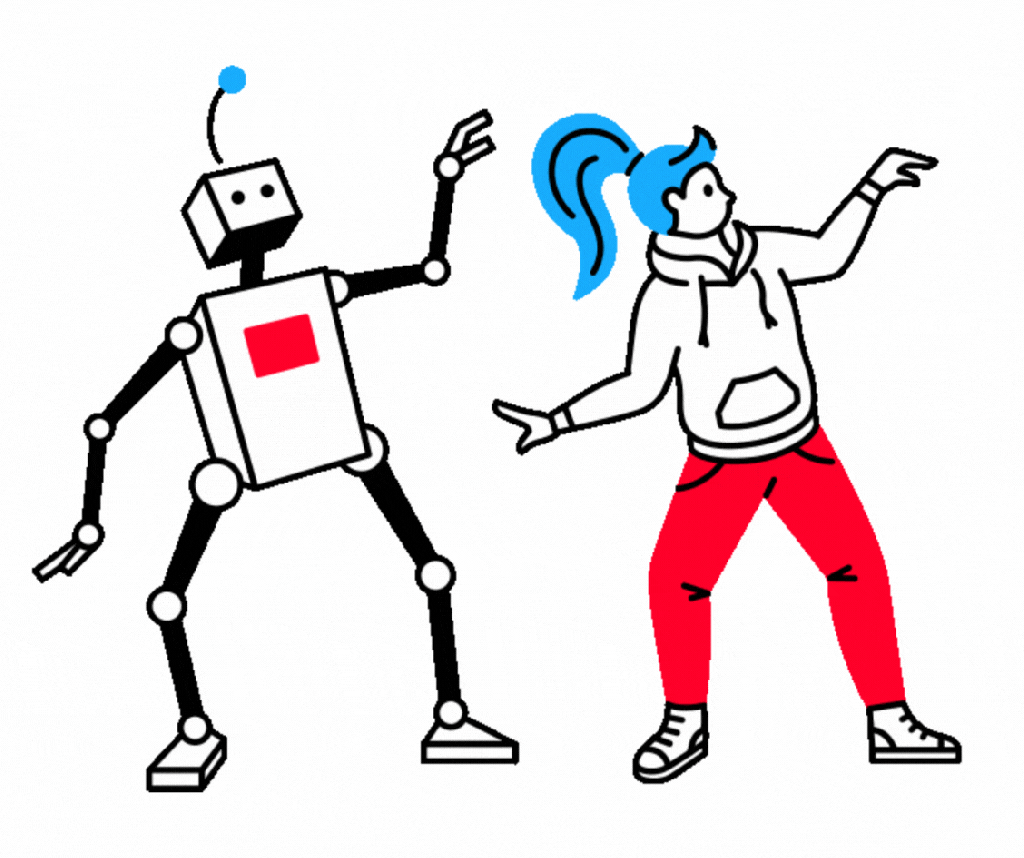
Good job! That may have been an easy dance move, but even with dance moves like this, it is important to practice dance movements to build muscle memory. Your brain makes it possible to learn new dance moves by creating new connections between nerve cells to help support your new skill. Now, can you share that move with someone else?
Brain Teaser
Let’s put your new understanding of the brain to work! In the puzzle below, you’ll play the role of the brain, coordinating the movement of a dancer. You’ll use input in the form of Choreography Cards to learn the steps to a dance and then carefully Clipbot’s direct movement on a Dance Floor Grid using the input.
Print out your Dance Floor Grid on which ClipBot will move. It is set up as a coordinate plane with an x and y axis. You’ll also need a small action figure like a LEGO mini-fig. If you don’t have one, create your own by building a ClipBot using paperclips and other craft items. Finally you’ll need the six choreography cards.
First, you will need to figure out the order of the steps to this dance. Each card shows a dance move. The order of the cards creates the choreography. When you place them in the correct order, your figure will start and end its dance in the center of the grid, on the yellow box. Note that when your dancer starts, it is facing forward toward the top of the grid. The way the figure is facing does matter for the puzzle.
Make sure each card is oriented so that the small yellow square is in the upper right corner, just like the grid. Also, pay attention to the orange “X” on each card, which represents the center of your dancer. That spot marks the coordinates, (x, y) on the grid associated with each card. As you move through the choreography, the coordinates associated with each card will reveal the secret code. (Too tough? Try the cards that have the numbers for the coordinates on them or use our dance diagram to see the choreography marked on the grid.)
Once you have the code, enter it into the Science Friday Enigma Machine to find out if you’re right and get your digital badge. Use just the 12 digits; skip the parentheses, commas, minus signs, or spaces.
Did you love this challenge? This activity and puzzle are part of the Hack Your Brain neuroscience escape room.
Download the puzzle! Enter the code!
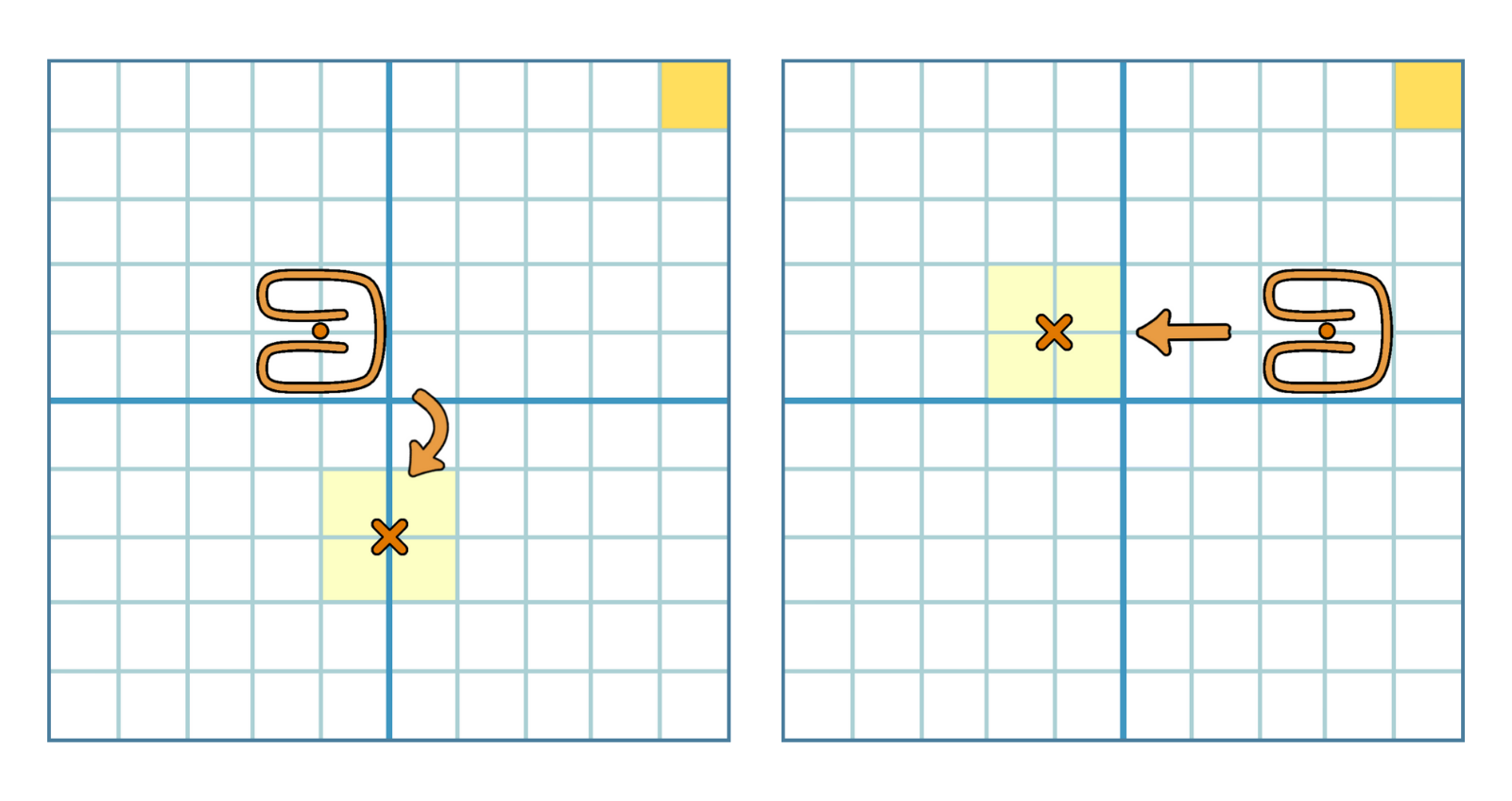
Check Your Knowledge
See how much you remember from your reading! These ten questions will test your recall. Both versions below are free. Kahoot! is a fun game-based platform with pictures and music. Google is a more traditional online quiz format.
Working with a group? You can host your own Kahoot! live or copy the Google form and assign it to a class. Both require logins.
Want To Learn More?
Here are some great resources for you to check out!
- In this article, learn about how Ph.D. candidates share their research through a dance competition. It is a whole new way to envision research!
- Movement is amazing, but what if you have physical limitations? Read about an incredible invention that is offering people with limited mobility the opportunity to dance.
- What happens when dance and physics collide? Learn how a choreographer designs movement for dancers.
- Finally, here’s another amazing resource from the Dana Foundation for learning more about how the brain works.
NGSS Standards
- MS-LS1-8 From Molecules to Organisms: Structures and Processes: Gather and synthesize information that sensory receptors respond to stimuli by sending messages to the brain for immediate behavior or storage as memories.
Special thanks to the Dana Foundation for funding Hack Your Brain.

Credits
Lesson by Svea Anderson
Neuroscience Consultation by Daisy Reyes
Game Design by Lucas Leprince
Illustration by Joy Ho
Puzzle Illustration by Fai Kosciolek
Developmental Editing by Sandy Roberts and Sheeva Azma
Copyediting by Ariel Zych
Digital Production by Ariel Zych
Educator's Toolbox
Meet the Writers
About Svea Anderson
Svea Anderson is a twenty-year veteran educator who never hesitates to step out of her comfort zone and try something new. She enjoys a challenge and never passes up an opportunity to learn something new.
About Sandy Roberts
Sandy Roberts is Science Friday’s Education Program Manager, where she creates learning resources and experiences to advance STEM equity in all learning environments. Lately, she’s been playing with origami circuits and trying to perfect a gluten-free sourdough recipe.
